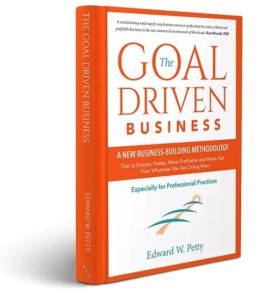 How to support the health of our children
How to support the health of our children
“History will judge us by the difference we make in the everyday lives of children.” Nelson Mandela*
Here in Wisconsin, the Chiropractic Society of Wisconsin, the primary chiropractic association, is sponsoring a Kid’s Day next week, which we are supporting.
Also, I am supporting it with donations from the sales of my book. Please consider contributing directly to the C.S.W. or buying my book (or 20 of them!).
If you look into it, how we treat our kids in the 2020s is probably worse than in decades past. The Styrofoam-like food, the toxins such as Glyphosate and Phthalates in our breakfast cereal, the nano plastics now in our blood, the sugar and seed oil, the escalation of Pharma drugs and shots, the social media, the list goes on and on.
Just look at the stats for health care in America, those that you can find. They are abysmal and getting worse. (I have links to some listed below.)
There are plenty of sources to learn about how we treat our kids, but as you can imagine, they are hard to find on regular internet searches. It’s a little like trying to find the truth about cigarettes or asbestos in the 1950s — you almost have to search out whistleblowers to find out what is truly going on. An e-book that was published in 2018 called The Sickest Generation, by Children’s Health Defense, is a good place to start. (Link below)
People in your community aren’t going to hear too much about this from the media or most corporate-paid doctors – though more independent physicians seem to be speaking out. This is why your work is so vital.
As a side note, promoting health care for kids can build your practice. Helping children get healthier is a great marketing and practice-building strategy.
But first and foremost, the primary reason to see kids is to help them stay healthy.
Chiropractic care can help young children with the bumps and tumbles they take as they grow. Young athletes especially benefit from adjustments. Other independent and naturally oriented health providers, such as those practicing acupuncture and Traditional Chinese Medicine, and functional and integrative medical providers can also be of great help.
But beyond chiropractic adjustments, education and support for a healthy chiropractic lifestyle is fundamental. Educate the parents and help the kids.
Consider contributing to the C.S.W. Kids Day program.
Also, consider encouraging your state association to develop a kids’ program, and if they already have one, please contribute to that.
Ed Petty
Link to Chiropractic Society of Wisconsin: https://www.chiropracticsocietywi.org/chirokids-day
Link to The Sickest Generation published by Children’s Health Defense, https://childrenshealthdefense.org/ebook-sign-up/ebook-sign-up-the-sickest-generation/
More links to references:
-
*Nelson Mandela. From a Luncheon hosted by United Nations Secretary General Kofi Anan at the special session of the U.N. for Children, New York City May 9, 2002
-
Link to Chiropractic Society of Wisconsin: https://www.chiropracticsocietywi.org/chirokids-day
-
Link to The Sickest Generation published by Children’s Health Defense, https://childrenshealthdefense.org/ebook-sign-up/ebook-sign-up-the-sickest-generation/
-
U.S. Health Care from a Global Perspective, 2022: Accelerating Spending, Worsening Outcomes https://www.commonwealthfund.org/publications/issue-briefs/2023/jan/us-health-care-global-perspective-2022
-
Ten Thousand Chemicals in Food and Food Packaging: What Are These Substances Doing to Our Children?
-
Health declining in Gen X and Gen Y, U.S. study shows: https://www.sciencedaily.com/releases/2021/03/210319125436.htm
-
Mental Health In Schools: A Hidden Crisis Affecting Millions Of Students
-
275 Studies Showing Food, Exercise and Supplements A.R.E. medicine
-
https://childrenshealthdefense.org/defender/processed-food-sick-kids-russell-brand/
From The Sickest Generation
American children have never been sicker. Over half (54%) are suffering from one or more chronic illnesses.
The “4-A” disorders—autism, attention deficit hyperactivity disorder, asthma and allergies—have experienced meteoric growth, affecting children’s quality of life and contributing to premature mortality.
U.S. children are far more likely to die before their first birthday than infants in other wealthy countries and life expectancy is falling, driven largely by rising death rates in adolescents and younger adults. Suicide is the second leading cause of death in teens, half of whom are reported to have at least one mental, emotional or behavioral disorder.
The proportion of public school children using special education services is skyrocketing, with estimates ranging from 13% to 25% of school populations.
Mystifyingly, there is almost no outcry in medical, public health or government circles to find answers and solutions.

















